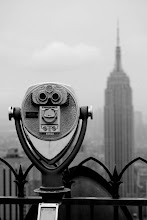The theme of my exhibit is going to depict ancient statues from around the world. I chose this theme because I believe statues are a very beautiful form of art and more people should be able to see and experience there greatness. They offer a three dimensional aspect to art and are large in size.
The three statues I chose to be displayed at my exhibit are all from around the world. My first statue is from Roman art. It is a "Marble statue of a bearded Hercules" who was mythological hero of superhuman strength. This is significant to me because when I was a kid, Hercules was my one of my favorite characters. This statue is very detailed, and well crafted. The second work of art I chose to be displayed at my exhibit is a statue from Egyptian art called "Recumbent Anubis" because of the horizontal resting position of the statue. Anubis is the god of mummification and protector of tombs in Egyptian mythology. Anubis is also illustrated in many other pieces of Egyptian art. My third and final statue is from Asian Art and is titles "Seated Buddha". In appearance of this statue is of a soft grey color, and is also very happily detailed treasure representing Buddhism. Over all, all three of these statues represent a cultural, world wide identity that the majority of the population recognizes. They also show that they are very old since they all have chipped and damaged spots.
These works of art, despite there defects are amazing to look at. They show how intelligent and artistic we can be, and that pretty much anything can be done with the right mind set and proper resources. I am looking forward to finishing my exhibit soon so more can come witness real ancient statues that are from around the world.
"Marble statue of a youth man", 1st century A.D., Greek and Roman Art.
"Marble statue of a wounded warrior", A.D. 138-181, Greek and Roman Art.
"Marble statue of an old woman", A.D 14-68, Greek and Roman Art.
"Marble Head of a Greek general", 1st-2nd century A.D., Greek and Roman Art.
"Bronze statuette of a horse", late 2nd-1st Century B.C., Greek and Roman Art.
"Haremhab as a Scribe of the King", ca. 1336-1323 B.C., Egyptian Art.
"Large Kneeling Statue of Hatshepsut", ca. 1473-1458 B.C., Egyptian Art.
"Statue of an Offering Bearer", ca. 1981-1975 B.C., Egyptian Art.
"Ptah Statue", ca. 1070-712 B.C., Egyptian Art.
"Statue of Seated Imhotep", 332-30 B.C., Egyptian Art.
"Recumbent Anubis", 664-30 B.C., Egyptian Art.
"Seated Buddha", 7th-8th century, Asian Art.
"Bust of figurine", ca. 1000-250 B.C., Asian Art.































